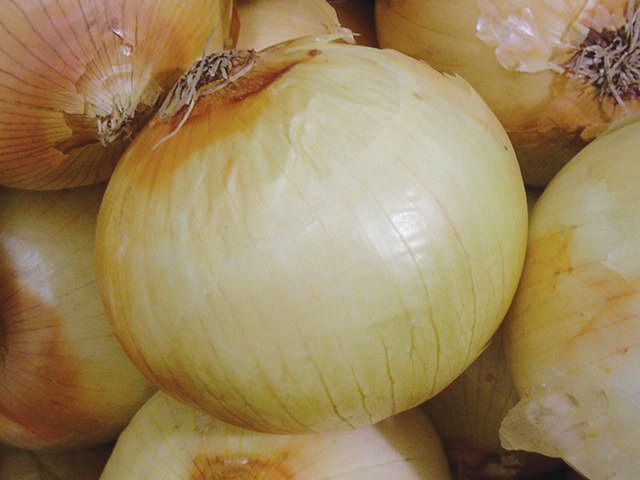
Two weeks into harvest, South Texas onion growers say in spite of another year of drought, water shortages, fewer acres planted, and a smaller yield so far, onions coming out of the ground are in good shape and wholesale prices are steady, a better scenario than expected.
"We are about 20 percent of the way through harvest at this point," reports Ed Holmes, onion grower and owner of the Onion House in Weslaco.
Holmes says it's not going to be a bumper year last year when yields were high, quality was excellent, demand was steady and prices were very good. But he says it looks like this year's crop is going to at least exceed early season predictions.
"We don’t have any disease or pest concerns, but we did start harvesting rather late. We had an unusually cool winter, which resulted in a later start to the season. Normally the South Texas onion crop would come in five days on either side of March 20 and be done five days either side of May 10. This year we didn’t even get started until April 10 and my guess is we’d be real lucky to be done by May 20," he added.
Holmes makes reference to last year's bumper yields, estimated to be as high as 1,200 to 1,400 bags of onions per acre on better fields compared with about an 800 bags per acre average most years. Also, the wholesale price last year ranged between $15 and $22 dollars per bag.
By comparison, this year's expected yields (based upon this early stage of harvest) are about 600 to 700 bags per acre with wholesale prices steady between $10 and $12 per bag.
Above break-even
"Break even for us is about $7 a bag, but even at that we can put a little back into the farm, and that's decent," he added.
Most South Texas farmers say water issues caused by the drought and the lack of water deliveries from Mexico as promised in a 1944 water treaty have created dire conditions that have limited the availability of irrigation water in recent years. But Holmes says depending on tropical weather, those conditions can change quickly.
"Most of the water that fills Falcon and Amistad reservoirs comes out of the Concho River watershed between the Sierra Madre east and west mountains in Mexico, and it’s not at all unusual to get either Pacific or Atlantic hurricanes that can dump a lot of water into the Rio Grande River watershed," Holmes explained. "Three years ago Amistad nearly filled up in about a month, so we’re always optimistic about the weather but it’s just so unpredictable."
Hurricane forecasters are predicting the development of an El Niño, or ENSO event, in the southern Pacific this summer that could create high wind shears over the Atlantic Basin that would help to prevent development of tropical systems.
That means possibly fewer tropical storms for the Gulf and Atlantic basin. But forecasters also predict an above average number of storms expected to develop off the Pacific coast of Mexico that could send heavy rains into Mexico's Sierra Madre mountain range. These rains could help resupply the two reservoirs that serve the Texas Rio Grande Valley.
But because of another year of drought, fewer acres of onions were planted for the current crop.
“I don’t know the exact number of onions planted last year, but given the tougher water constraints we’ve had to deal with this growing season, a lot of growers just didn’t have enough water to plant as many onions as they did last year. I would say growers have planted about 20 percent less than they did previously.”
Holmes says some growers have access to underground water in the Valley and some of that water is what he called "sweet water," meaning clean, healthy, fresh water. But he also warned that some groundwater in the Valley is high in saline content and not particularly healthy for crops.
While the jury is still out on how well onion growers will do with this year's reduced crop, farmers say they are optimistic now that final yields and price points may well play in their favor.
About the Author(s)
You May Also Like




